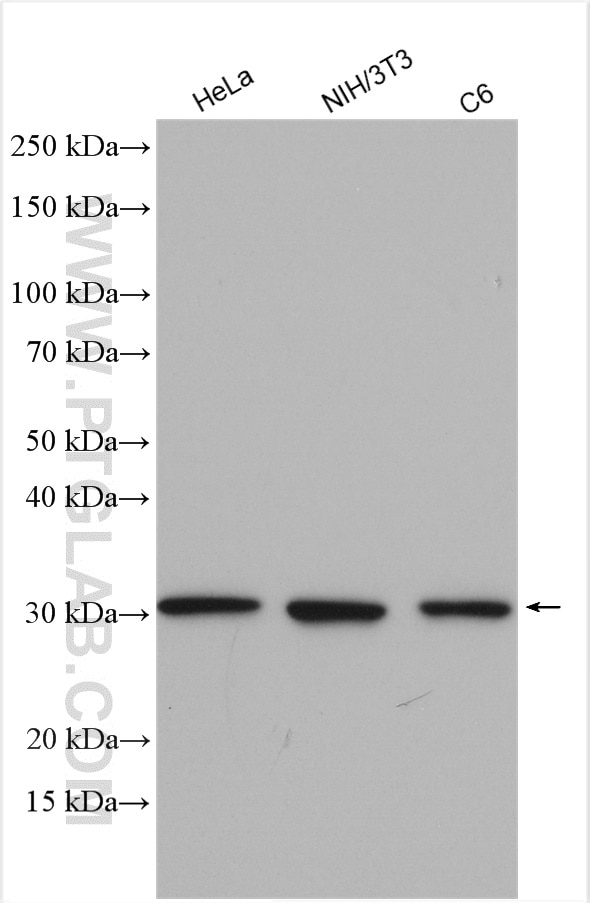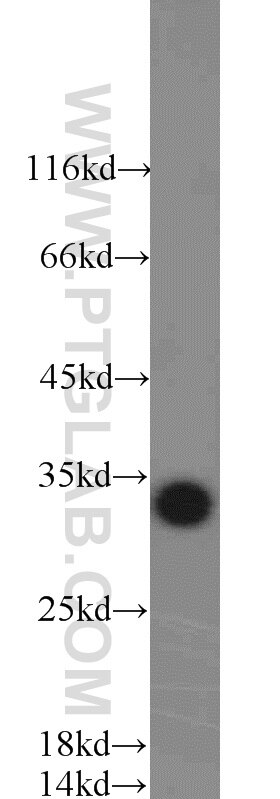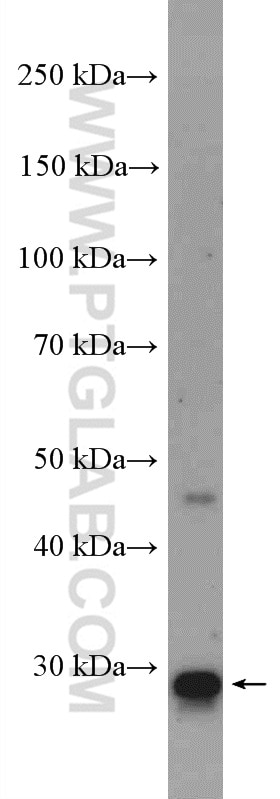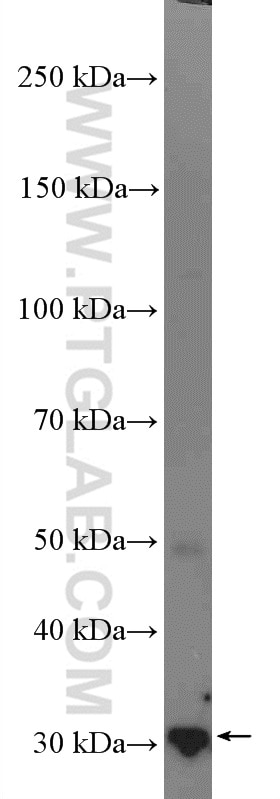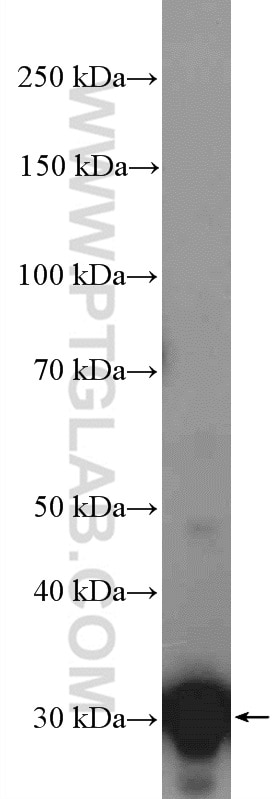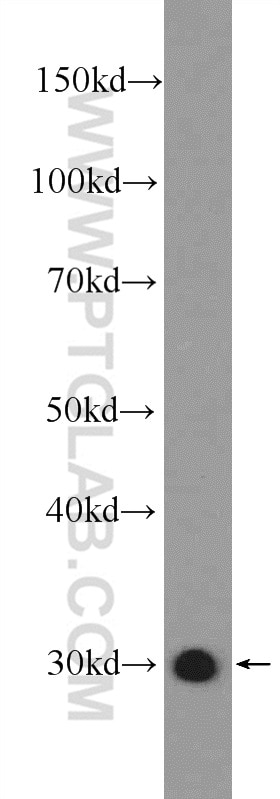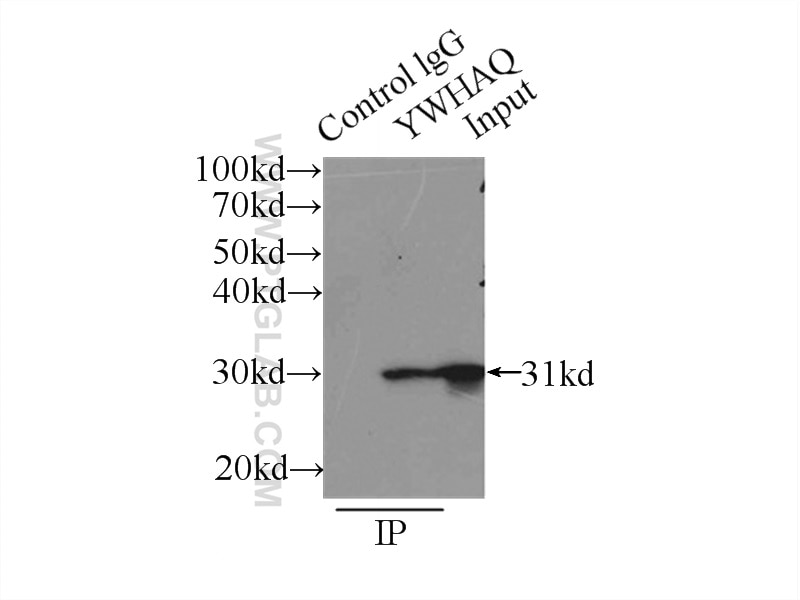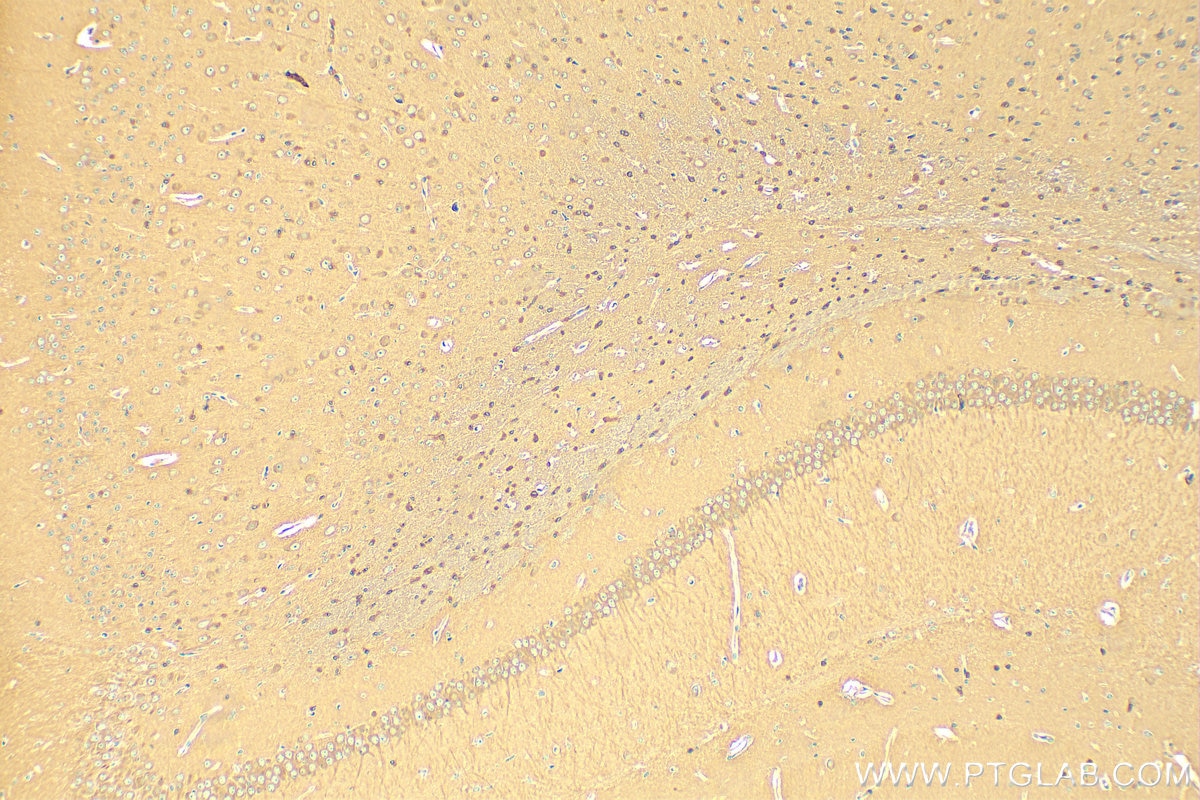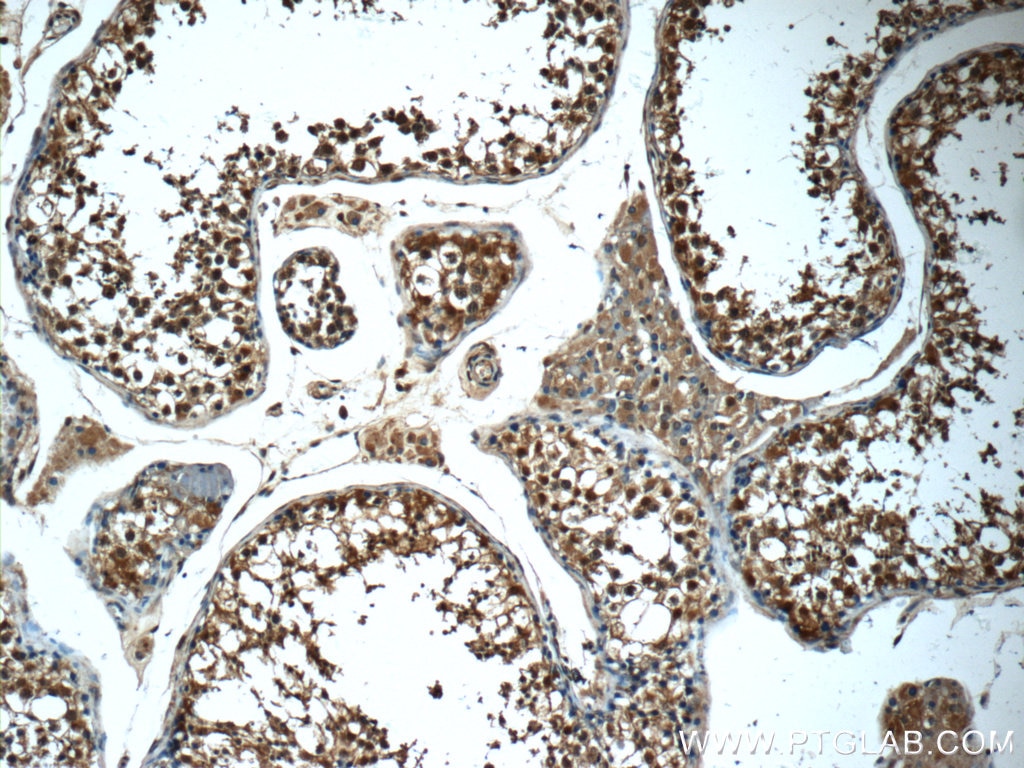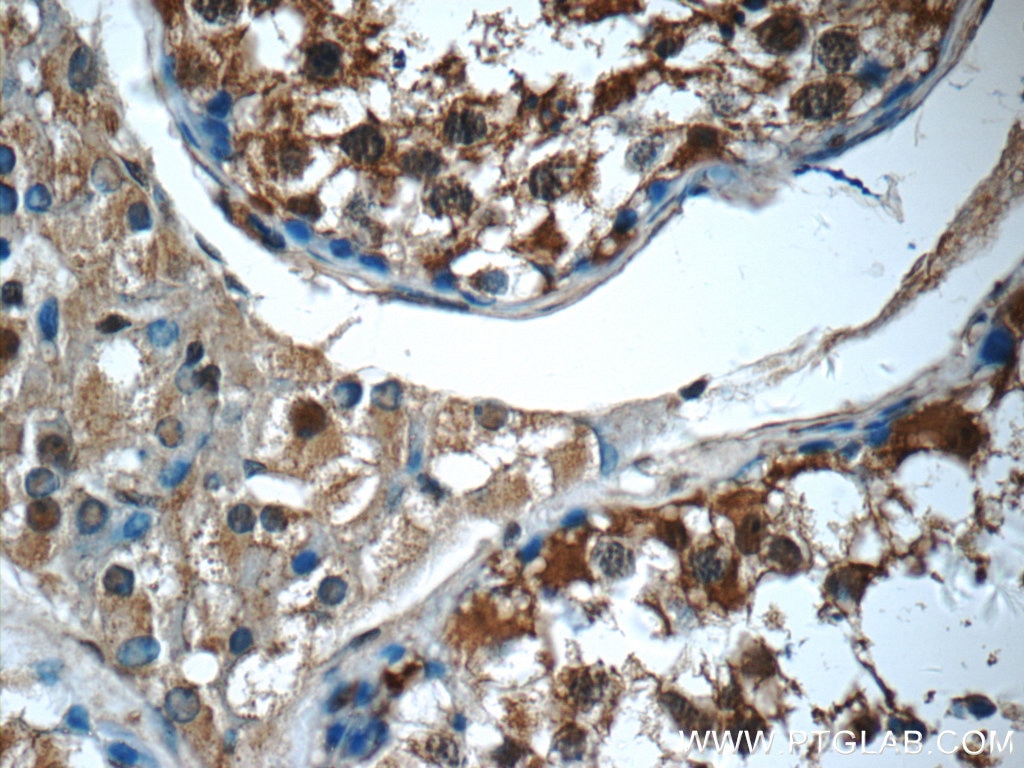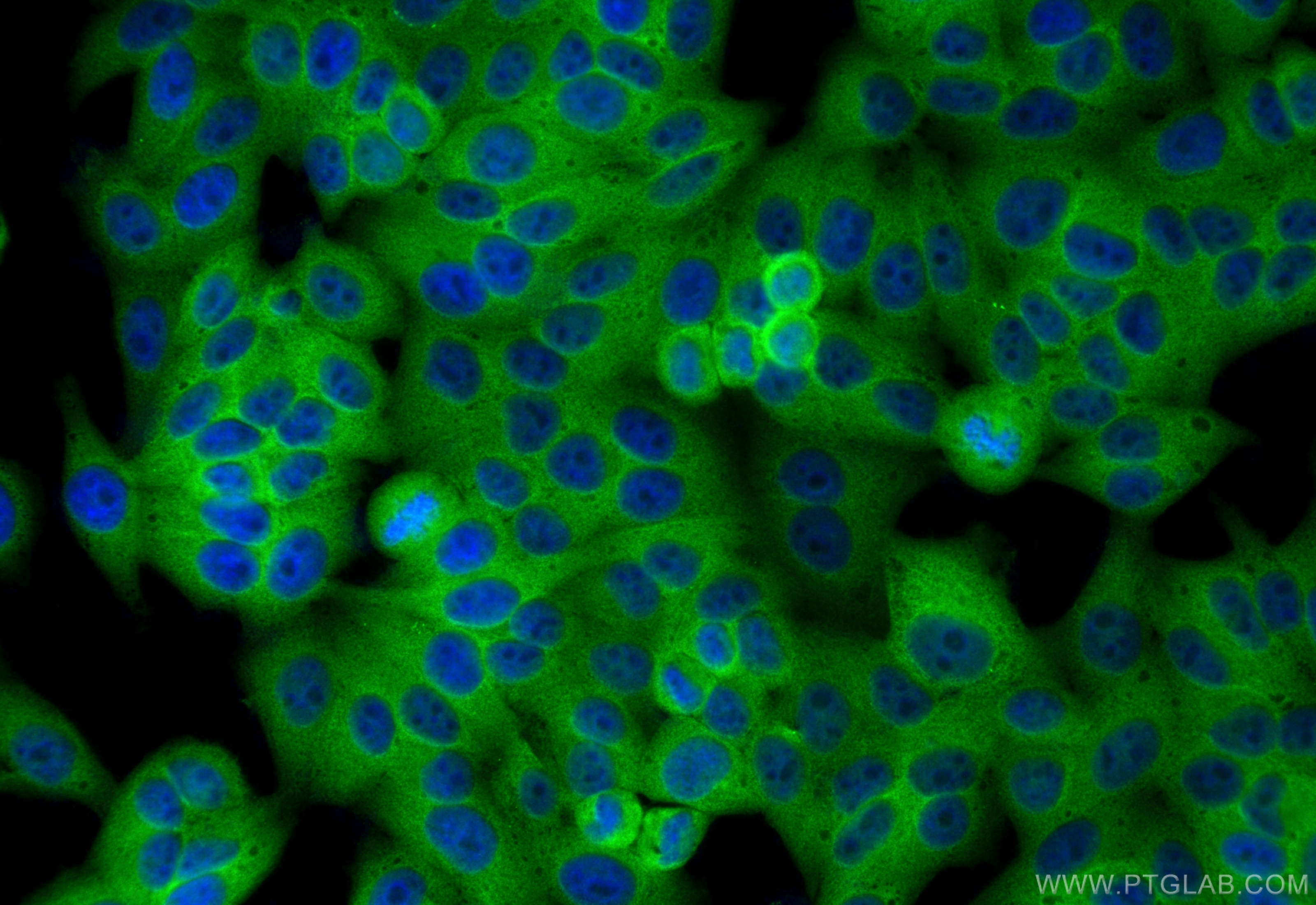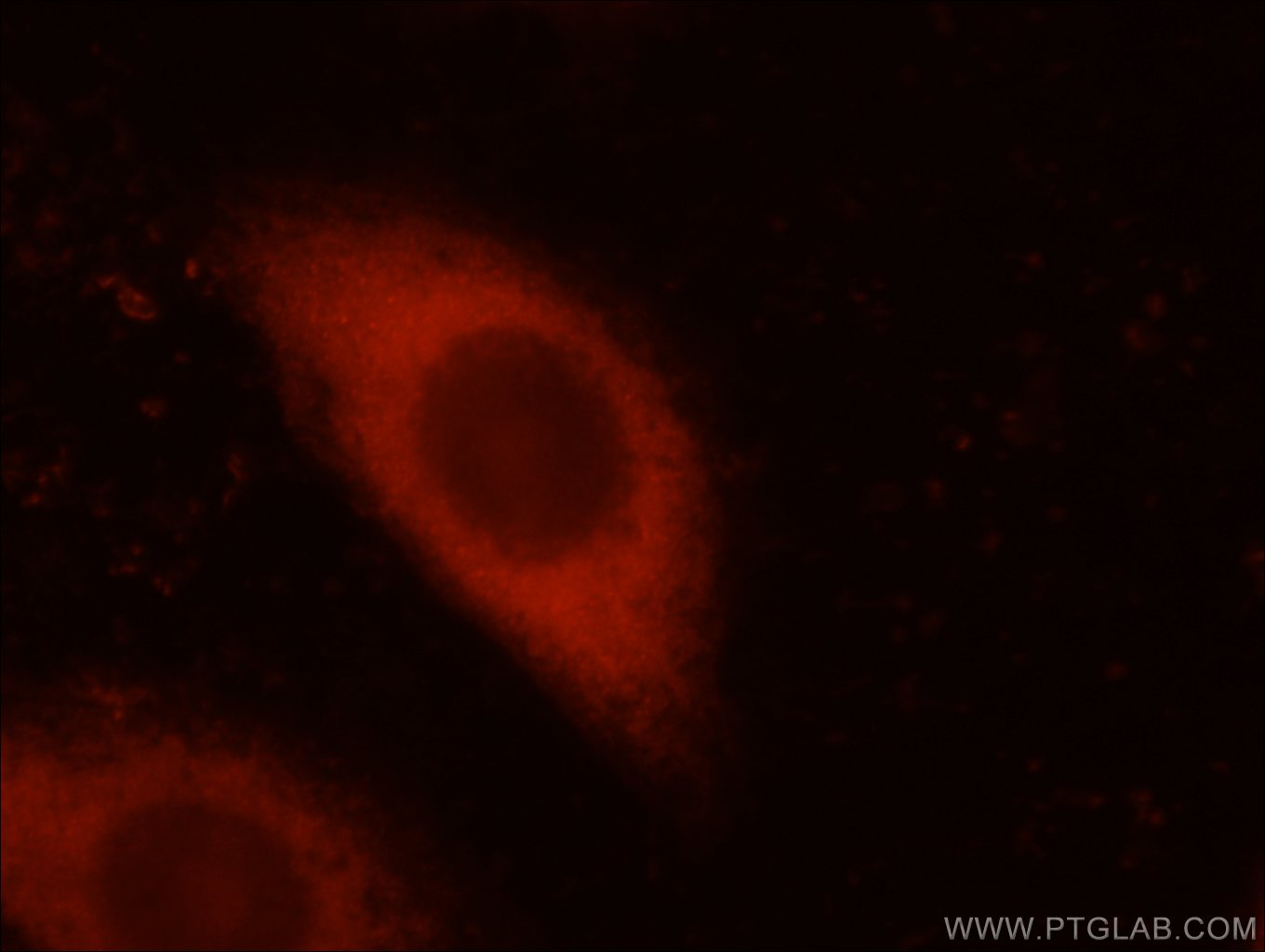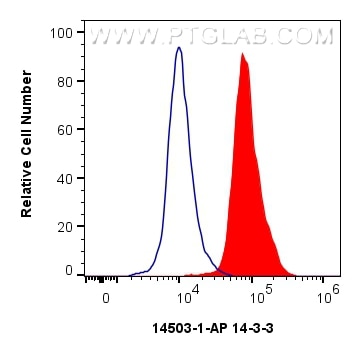- Phare
- Validé par KD/KO
Anticorps Polyclonal de lapin anti-14-3-3
14-3-3 Polyclonal Antibody for WB, IF/ICC, FC (Intra), IP, ELISA
Hôte / Isotype
Lapin / IgG
Réactivité testée
Humain, rat, souris
Applications
WB, IHC, IF/ICC, FC (Intra), IP, CoIP, RIP, ELISA
Conjugaison
Non conjugué
N° de cat : 14503-1-AP
Synonymes
Galerie de données de validation
Applications testées
| Résultats positifs en WB | cellules HeLa, cellules C6, cellules Jurkat, cellules NIH/3T3, tissu cardiaque de souris, tissu cérébral de souris, tissu hépatique de rat, tissu hépatique de souris |
| Résultats positifs en IP | tissu pulmonaire de souris |
| Résultats positifs en IF/ICC | cellules HepG2, |
| Résultats positifs en FC (Intra) | cellules HeLa, |
Dilution recommandée
| Application | Dilution |
|---|---|
| Western Blot (WB) | WB : 1:1000-1:4000 |
| Immunoprécipitation (IP) | IP : 0.5-4.0 ug for 1.0-3.0 mg of total protein lysate |
| Immunofluorescence (IF)/ICC | IF/ICC : 1:200-1:800 |
| Flow Cytometry (FC) (INTRA) | FC (INTRA) : 0.40 ug per 10^6 cells in a 100 µl suspension |
| It is recommended that this reagent should be titrated in each testing system to obtain optimal results. | |
| Sample-dependent, check data in validation data gallery | |
Informations sur le produit
14503-1-AP cible 14-3-3 dans les applications de WB, IHC, IF/ICC, FC (Intra), IP, CoIP, RIP, ELISA et montre une réactivité avec des échantillons Humain, rat, souris
| Réactivité | Humain, rat, souris |
| Réactivité citée | rat, Humain, souris |
| Hôte / Isotype | Lapin / IgG |
| Clonalité | Polyclonal |
| Type | Anticorps |
| Immunogène | 14-3-3 Protéine recombinante Ag5959 |
| Nom complet | tyrosine 3-monooxygenase/tryptophan 5-monooxygenase activation protein, theta polypeptide |
| Masse moléculaire calculée | 28 kDa |
| Poids moléculaire observé | 31 kDa |
| Numéro d’acquisition GenBank | BC056867 |
| Symbole du gène | 14-3-3 theta |
| Identification du gène (NCBI) | 10971 |
| Conjugaison | Non conjugué |
| Forme | Liquide |
| Méthode de purification | Purification par affinité contre l'antigène |
| Tampon de stockage | PBS with 0.02% sodium azide and 50% glycerol |
| Conditions de stockage | Stocker à -20°C. Stable pendant un an après l'expédition. L'aliquotage n'est pas nécessaire pour le stockage à -20oC Les 20ul contiennent 0,1% de BSA. |
Informations générales
14-3-3 proteins are the first phosphoserine/phosphothreonine-binding proteins to be discovered. 14-3-3 family members interact with a wide spectrum of proteins and possess diverse functions. Mammals express seven distinct 14-3-3 isoforms (gamma, epsilon, beta, zeta, sigma, theta, tau) that form multiple homo- and hetero- dimmers. 14-3-3 proteins display the highest expression levels in the brain, and have been implicated in several neurodegenerative diseases, including Alzheimer's disease and amyotrophic lateral sclerosis.
Protocole
| Product Specific Protocols | |
|---|---|
| WB protocol for 14-3-3 antibody 14503-1-AP | Download protocol |
| IHC protocol for 14-3-3 antibody 14503-1-AP | Download protocol |
| IF protocol for 14-3-3 antibody 14503-1-AP | Download protocol |
| IP protocol for 14-3-3 antibody 14503-1-AP | Download protocol |
| Standard Protocols | |
|---|---|
| Click here to view our Standard Protocols |
Publications
| Species | Application | Title |
|---|---|---|
Neuron Targeting 14-3-3θ-mediated TDP-43 pathology in amyotrophic lateral sclerosis and frontotemporal dementia mice | ||
Int J Biol Macromol Biofilm formation initiating rotifer-specific biopolymer and its predicted components | ||
Elife Ser/Thr kinase Trc controls neurite outgrowth in Drosophila by modulating microtubule-microtubule sliding.
| ||
Aging (Albany NY) The interaction protein of SORBS2 in myocardial tissue to find out the pathogenic mechanism of LVNC disease. | ||
J Inflamm Res PADI6 Regulates Trophoblast Cell Migration-Invasion Through the Hippo/YAP1 Pathway in Hydatidiform Moles. |
Avis
The reviews below have been submitted by verified Proteintech customers who received an incentive for providing their feedback.
FH Balawant (Verified Customer) (12-20-2022) | I have used this antibody for western blot and it is working great for western blot
|
